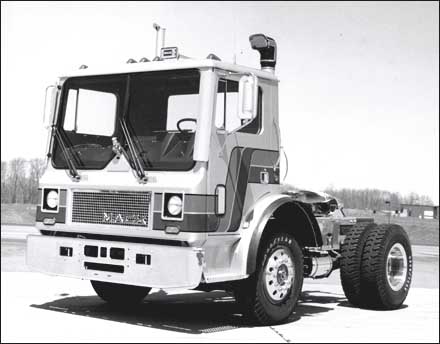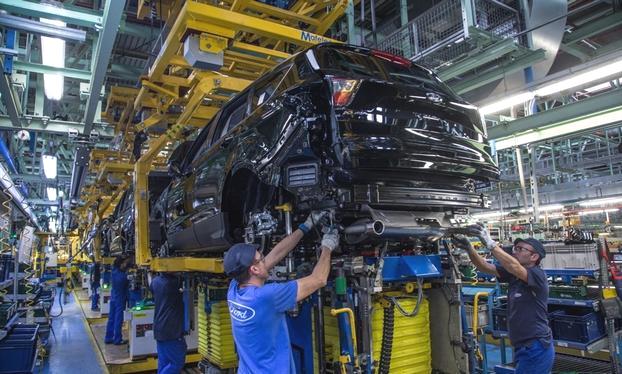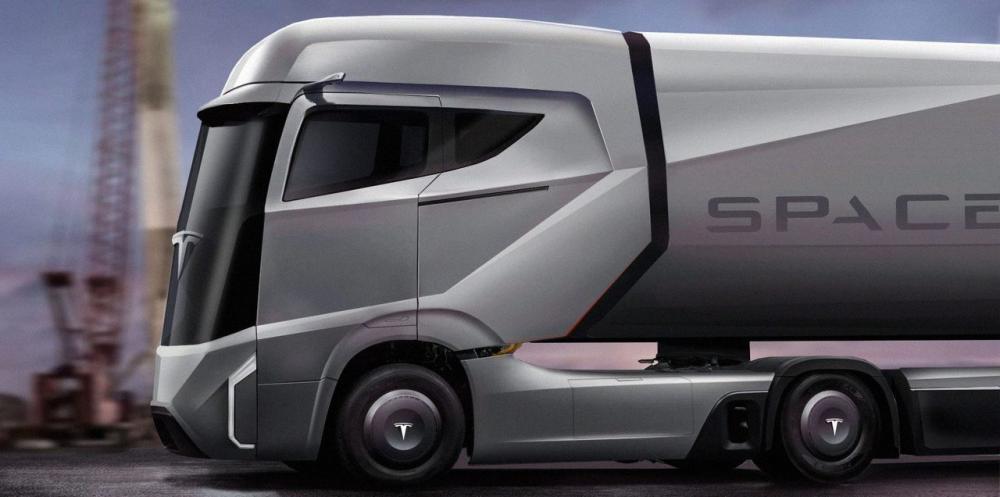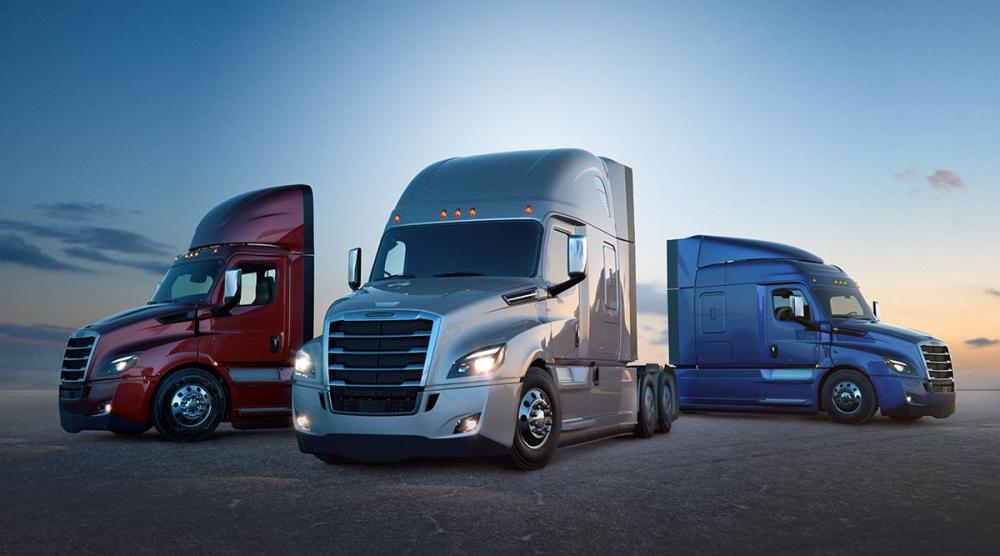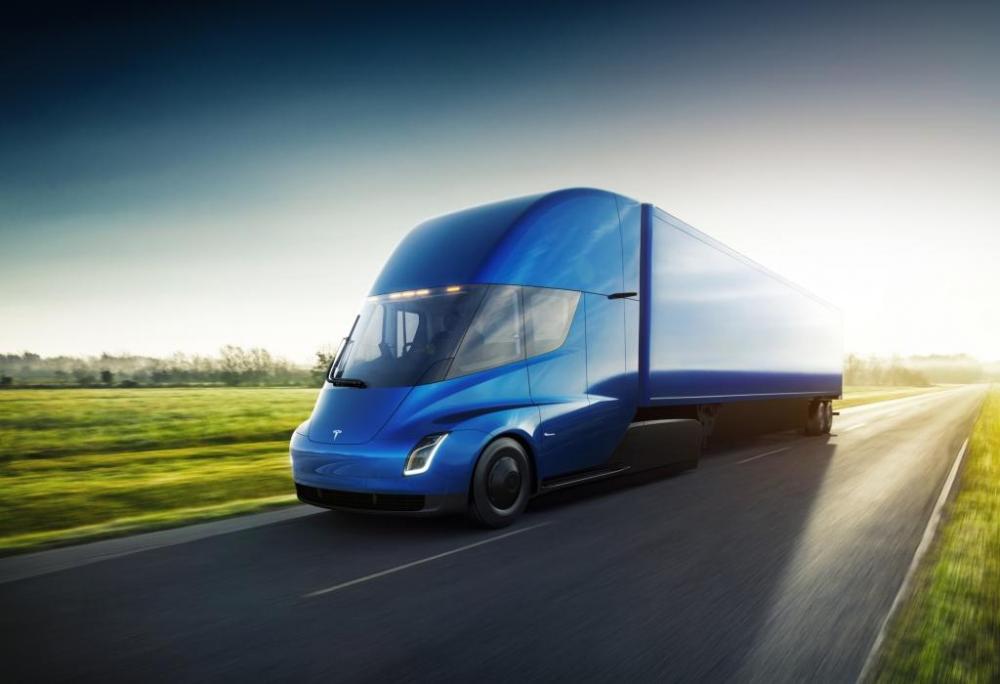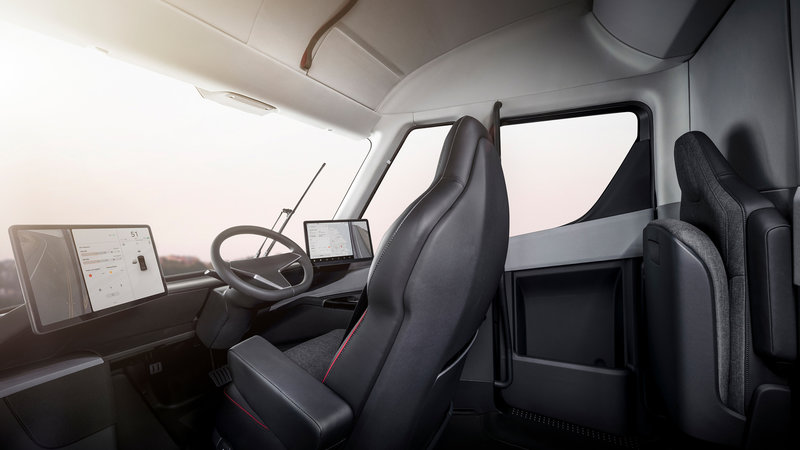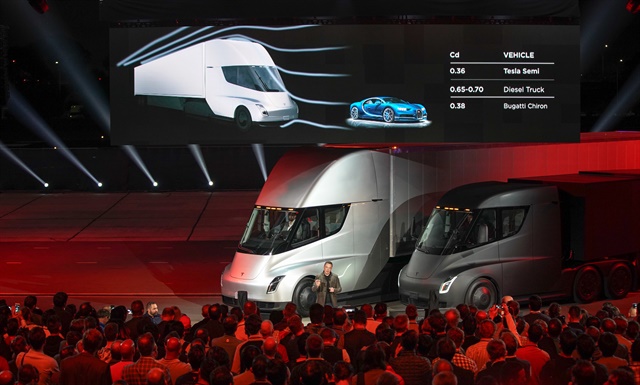
kscarbel2
Moderator-
Posts
18,878 -
Joined
-
Days Won
114
Content Type
Profiles
Forums
Gallery
Events
Blogs
BMT Wiki
Collections
Store
Everything posted by kscarbel2
-
Do unto them as they did to their victims. An eye for an eye. We all believe in the "rule of law". However, in cases of murder where there is indisputable proof, I would like to see the murderer(s) executed within 24 hours. It's just that simple, and it would largely solve the problem. Anyone who intentionally snuffs out the life of another human being has, inherently, by the actions of their own hands, lost their right to live. Drastic situations require drastic measures, and we've reached that point.
-
Guys, it all boils down to having a heart-driven passion for Mack Trucks and the truck business, and that passion was planted in all of us back when by Zenon Hansen. Zenon taught us an all-new thought process centered around pride and the bulldog. Mack wasn't a job, but rather a way of life. When Zenon was named Mack's president on January 7, 1965, Mack Trucks was literally reborn. It was Mack 2.0. Long after Zenon retired, his legacy, his inspiration, lived on in the hearts of every Mack employee. Which is why I say, what Volvo Group has done, reduce an American icon down to a mere shell of its former self, should be a crime.
-
We're told the F/A18F has an hourly operating cost of US$10,507. (https://www.forbes.com/sites/niallmccarthy/2016/08/16/the-hourly-cost-of-operating-the-u-s-militarys-fighter-fleet-infographic/#462da01b685f) Such immature antics aren't becoming of a naval officer, and don't do anything for the Navy's image.
-
Associated Press / November 13, 2017 While two parents admitted they did physically abuse and neglect 3-year-old Jayden Jones, who was found dead in his Huntington home in July 2016, and failed to seek medical attention to save his life, a jury found Thursday their actions did not equate to first-degree murder [how ???]. However, the jury did not recommend mercy, meaning the pair will spend the rest of their life behind bars [senselessly at taxpayer expense]. Jayden's mother, Mariya Jones, 24, and step-father, Aaron Miles, 33, were found guilty of second-degree murder by a CabellCounty jury on Thursday. They also were found guilty of murder of a child by a parent, which carries a life sentence. The jury will now be called upon to determine whether or not Jones and Miles will be given mercy. "Jurors heard and saw evidence that was just brutal as to what these defendants did to this 3-year-old child," prosecutor Sean "Corky" Hammers said. "It wasn't like it was a surprise," defense attorney Kerry Nessel said. "It was pretty bad. The pictures were dreadful. I believe my client. I still believe him. I really do. I think his soon to be ex-wife is the one who inflicted these injuries on Jayden. My client had some culpability. He sure did." Attorneys on both sides said it was one of the most horrible cases they've seen. "This was just an intentional killing, as the jury put it, of a 3-year-old by two parents," Hammers said. "It's the worst I've seen," Nessel said. "Nothing is even close." Miles and Jones were charged in a 16-count indictment with first-degree murder, murder of a child by a parent/guardian, death of a child by a parent/guardian, conspiracy to commit child abuse causing bodily injury and two counts of child neglect creating a substantial risk of injury. The jury received the case Wednesday afternoon and elected to start deliberations Thursday after hearing there were 115 pieces of evidence for them to sort through. The jury started deliberation at 9 a.m. Thursday. At the mid-morning break, some jurors exited the room with tears streaking down their face. They came out at about 12:30 p.m. to ask the judge to define intent, which is needed for a first-degree murder conviction. He could not and asked the jury to go return to deliberations. Miles said he had not realized how bad Jayden’s injuries had been, but Brown pointed to times Miles said he had cleaned Jayden himself and asked how he had not seen the markings that covered the boy head to toe. Miles and Jones left their home at about 9:30 a.m. the day Jayden died, July 12, 2016. She went to a DHHR appointment, while he ran his own errands. Jayden had been left in the bathroom because he urinated on the couch overnight. He returned home at one point and testified Jayden was alive, but still wanted to sleep. He said he left him with a pillow, blanket, juice and water, even though first-responders said they did not see those items in the bathroom. Miles said he threw away the pillow because it was soaked in something when Jayden died and that he removed other items and placed them where they originally belonged before they arrived. Stanley argued at the point Miles returned to the home for to check on their three children, Jayden was already dead because when first responders arrived Jayden was cold to the touch. Miles picked Jones up from her appointment and the pair returned home. Between the time they left DHHR and called 911, it was about an hour, Stanley estimated. When the couple returned home they first went to the bathroom. Jones used the bathroom while Miles attempted to wake Jayden up. He could not. He said he leaned Jayden up and his head drooped. Miles said at that point he knew something was wrong. He said he started attempting to perform CPR on Jayden while calling a friend for help. The friend told him to call 911, but 20 minutes went by before the parents did. Miles said he was trying to save Jayden. Stanley and Brown said the pair might have been trying to hide illegal drug items. Stanley’s client was too afraid of Miles, she said, because of domestic abuse and fear of landing on the streets if he was arrested, to report Miles’ illegal activities. Brown said Miles was part of a large drug ring in Huntington, pointing to text messages and friendships with Mark Bush, who is currently serving 17 years in federal prison for drug crimes, and Tiquan Lang, who is serving probation time for the same. While Miles performed CPR, Jones was erratic and had started putting makeup on Jayden so investigators would not see scarring. Miles said he placed Jayden into the bathtub to wash off the makeup and excrement. But the bathtub, Brown said, was dusty when investigators photographed it. First responders arrived in less than five minutes after being called and found Jayden in the hall of the home downstairs. Because of poor lighting, they moved him outside, where the afternoon sunlight shined on his battered body. He had bruising, scratch marks, cuts, burns from the top of his head to the bottoms of his feet; a broken rib, internal bleeding; deep-tissue bruising and oral injuries. An autopsy found internal hemorrhaging, especially around his temple, due to deep bruising. Whip lashes scarred his back. It was determined he died of sepsis after holes in his intestines leaked feces into his abdominal cavity. The state’s expert witness, Dr. Barbara Knox, testified Jayden had been tortured through a mixture of physical and mental abuse. Besides the severe beatings, he was isolated from his family for stealing food and fighting with his sister, she said, and a child stealing food from their own house was a sign food had been withheld from them. Jayden was forced to do exercises. Miles admitted to forcing pushups and bear crawls as forms of corporal punishment. A video played in court showed Jayden being forced to hold a pumpkin over his head while his parents watched. Tiquan Lang testified he had witnessed them both hitting the boy. When she felt like she was not able to do it hard enough, she told Miles to take care of it and he did, Lang testified. Belts, cords and a child’s toy were all items taken into evidence by the Huntington Police Department as instruments that could have been used to leave circle and looping patterns found in bruising on Jayden. Before the trial started Sept. 18, Miles had pleaded guilty to two charges of child neglect and Jones to three charges of child abuse for hitting and burning the child. Prosecutors were unable to find any medical records for Jayden from his short lifetime. Miles said he had taken Jayden for a checkup in Charleston, but that hospital said they had no record of any visit. A Child Protective Services case was opened against Jones after she went into DHHR drunk about a month prior to Jayden's death. While they were able to meet Jayden's siblings, Jones concealed Jayden from seeing case workers on more than half-dozen occasions.
-
In the same way a CEO/president "sets the tone" (atmosphere) at his company, I believe it is the government's job to lead society in a proper direction. We all know there's a massive behavior problem within US society, and yet our government never discusses it even though they are in the best position to address it. Today's America is not the country we grew up in. It is not the "benchmark for the world" that we were once proud of, and globally admired for.
-
ABC 7 / November 17, 2017 DEKALB, Ill. (WLS) -- DeKalb police said a woman has been charged with murder and child abuse in the death of her boyfriend's 2-year-old child. Police said at about 7:20 p.m. on Friday, Nov. 10, they were notified by staff at KishwaukeeCommunityHospital that a 2-year-old had sustained a brain injury under suspicious circumstances. The toddler was taken to Lurie Children's Hospital in Chicago for further treatment. An investigation found Alexandra Hoyle, 21, of DeKalb, who was the girlfriend of the boy's father, had slammed the child's head onto the hardwood floor of their home in the 800 block of Ridge Drive in DeKalb. Hoyle was arrested on Saturday, Nov. 11, and charged with aggravated battery to a child. Bond was set at $500,000 and subsequently lowered to $100,000. She was held at DeKalb County Jail until she posted bail [She was released ???]. Wednesday the 2-year-old succumbed to their injuries at Lurie Children's Hospital. An autopsy Thursday found he died of blunt force trauma to his head from child abuse and his death was ruled a homicide. Hoyle was arrested again and charged with two counts of first degree murder. Her bond was set at $5 million. A spokeswoman for the Department of Child and Family Services released a statement on Friday: "DCFS is investigating the father's girlfriend, Alexandra Hoyle, for allegations of abuse and neglect resulting in the death of Khalil Body. Khalil's twin brother was in the home at the time of the incident and is now in the custody of his father." DCFS said they have not had prior contact with Hoyle, but they have had prior contact with the child's biological mother and father for allegations of neglect in May 2016 and October 2017. "In May 2016, the biological mother was indicated for neglect and allegations against the father were unfounded. In October 2017, allegations of neglect were unfounded for both parents," DCFS said. Hoyle remains in custody at DeKalb County Jail. ----------------------------------------------------------------------------------------------------------------------------------- ABC 7 / November 16, 2017 LOS ANGELES -- A Palmdale man has been found guilty of first-degree murder in the death of his girlfriend's 8-year-old son, Gabriel Fernandez. Isauro Aguirre's fate was announced on Wednesday afternoon. The jury found him guilty of first-degree murder and also guilty in the special circumstance allegation of murder involving the infliction of torture. This count makes Aguirre eligible for the death penalty, though jurors were explicitly instructed not to consider potential penalties [why ???]. The penalty phase, during which jurors will be asked whether Aguirre should be sentenced to death or life in prison without parole, will begin Nov. 27. The murdered boy was routinely beaten, shot with a BB gun, fed cat feces and forced to sleep while gagged and bound inside a small cabinet, witnesses and prosecutors said. He died in May 2013. After the verdict was announced, Deputy District Attorney Jonathan Hatami was seen crying as he embraced Gabriel's biological father.
-
With a waterfall of murders daily, noting it is simply unavoidable. And innocent children are so often the victims. "Cultural decay and declining standards of behavior in the United States"
-
Associated Press / November 13. 2017 CRESTVIEW, Fla. – A murder charge has been filed against the boyfriend of a Florida woman whose 3-year-old daughter died after he kicked her in the head because she got out of a car seat. The Okaloosa County Sheriff’s Office said the murder charge was filed Sunday against 29-year-old Cory M. Hagwell in the killing of 3-year-old Adelynn Merrell. He also faces child abuse charges. The mother, 23-year-old Destinee J. Merrell, is charged with being an accessory after the fact, child neglect and child battery. Both are jailed without bail. Investigators say Hagwell kicked the 3-year-old girl in the head, locked her in a closet and took her body to nearby woods after finding her dead. The couple initially reported the girl missing. Update: An autopsy on Adelynn Merrell has revealed that the little girl died from a skull fracture to the back of the head caused by blunt force trauma. The Okaloosa County Sheriff’s Office has now added a charge of first-degree murder to prior charges involving 29-year-old Cory M. Hagwell and a charge of accessory after the fact to murder for Adelynn’s mother, 23-year old Destinee J. Merrell. ----------------------------------------------------------------------------------------------------------------------------------- Associated Press / November 14, 2017 A 25-year-old woman in Rochester, New York has been charged with second-degree murder for the bathtub drowning of her 10-day-old son. Markiya Mitchell was arrested and charged in connection with the death of her son Jeremiah Mitchell. Police say 25-year-old Mitchell admitted to intentionally drowning her baby inside her apartment at 31 Locust Street in the city. The baby was found unresponsive in the bathtub by another adult in the home who called 911. The baby boy was taken to Rochester General Hospital where he was pronounced dead a short time later. Authorities say the infant was submerged in bath water for one to two hours. Mitchell was arraigned on the murder charge Tuesday morning in Rochester City Court. She pleaded not guilty and was ordered held in jail without bail. Additional charges are pending in the case and Mitchell is scheduled to return to City Court Friday morning for a preliminary hearing.
-
-
Volvo Trucks - One minute about ‘Stop Look Wave’
kscarbel2 replied to kscarbel2's topic in Trucking News
Good driver, good braking system. Disc brakes impress. -
Volvo Trucks - One minute about ‘Stop Look Wave’
kscarbel2 replied to kscarbel2's topic in Trucking News
-
Cultural decay and declining standards of behavior in the United States. I don't go looking for such indescribably painful news, but how can you avoid these reports when they're happening every day all across America? This has become the new norm. Obviously American society has very serious issues, and yet our government neither discusses nor addresses it. Go figure.
-
Associated Press / November 17, 2017 A United States Army combat medic has been charged in the rape and strangling death of one of his 9-month-old twin daughters. Authorities were called to a home in Clarksville, Tennessee, early on Wednesday morning to assist a family that was administering CPR to an unresponsive baby girl. Police spokesperson Jim Knoll said the infant was taken to Tennova Health Care where she was pronounced dead with injuries consistent with rape. Homicide detectives accused Christopher Conway, 22, of sexually assaulting the 9-month-old infant and wrapping a cord around her neck, causing her to die of strangulation. Conway admitted to both raping and murdering the child during an interview with detectives. He was booked into the Montgomery County jail on a $100,000 bond over the rape charge but denied bond on the homicide charge by Judge Ray Grimes, who stated that this could [???] be a death penalty case. His first court appearance is set to be on Nov. 21 at 1:30 pm. Conway and his wife Emily, who have been married for three years, welcomed their twin daughters in February 2017. The surviving twin has been removed from the family's home and is currently in state custody. .
-
IVECO BUS introduces "New Crossway" 3-axle low entry bus
kscarbel2 replied to kscarbel2's topic in Trucking News
IVECO BUS Press Release / November 13, 2017 The New Crossway Low Entry Natural Power is crowned the "Sustainable Bus of the Year 2018" in the intercity category. This vehicle was awarded for its multiple qualities of which its smart design integrating tanks on the roof, its autonomy up to 600 km and its Cursor 9 NP engine particularly environmentally friendly. The Crossway LE NP introduces a new sustainable standard for urban and suburban missions. . -
The MR is about to turn 40...
kscarbel2 replied to Maxidyne's topic in Antique and Classic Mack Trucks General Discussion
There are many reasons I wouldn't buy a Volvo MR. The problematic Delphi-supplied fuel injection system is in the Top 5 (Delphi E3 unit pump or the new jury rig Delphi F2E common rail). I have great experience with Bosch, and Cummins-Scania XPI. -
The MR is about to turn 40...
kscarbel2 replied to Maxidyne's topic in Antique and Classic Mack Trucks General Discussion
The Mack MR has soldiered on since its introduction in 1978. Under Volvo, rather than invest in a much needed all-new cab and chassis replacement for the MR, they dragged their feet and finally introduced the hideous looking Terrapro in 2007. Certainly this low-cost, modest refresh of a now 40-year-old truck, notable only for its tacky plastic front fascia (appearance), has done nothing to impress the refuse industry. Has anyone noticed the growth of Peterbilt 520 and Autocar Xpeditor sales? The MR (Terrapro) is long on the tooth - the refuse industry would welcome a game-changing new refuse chassis that would revolutionize the business in the way the MR did in 1978. However Volvo has demonstrated no willingness to invest in that direction. Historical note - The Mack MR was introduced in 1978, in response to Crane Carrier Corporation's "Centurion" launched in 1974. Mack President Henry J. Nave was so impressed with the industry-changing Centurion, the first vehicle of its kind designed specifically to meet the needs of the refuse industry, that he ordered Mack engineers to study and surpass it. -
MR or MRU road tractor
kscarbel2 replied to Hook n ladder 1's topic in Modern Mack Truck General Discussion
The Mack "corporate" (R-model) bumper was standard on the MC, both domestic and export, because unlike the larger MR, it was based on the R-model. It was intended as a replacement for the MB 4x2 city tractors with customers like Overnite and APA, but then they began using the night time route tractors for daytime city delivery to reduce costs. . -
When Ford roamed the World - The D- and N-Series
kscarbel2 replied to kscarbel's topic in Other Truck Makes
For those who don't know, this is the Ford Thames Trader truck range that BC Mack spoke of. . -
Ford will spend $885 million to build next Kuga in Spain Reuters / November 17, 2017 MADRID -- Ford will invest more than 750 million euros (US$885 million) in its factory in Valencia, eastern Spain, to produce the next-generation Kuga SUV [what the US market Escape is based on, but without the engine fire feature]. The Valencia plant employs more than 8,000 people and, in addition to the Kuga, makes the Mondeo and S-Max alongside the Tourneo and Transit commercial vans, according to Automotive News Europe's car assembly plant map. Kuga production represents nearly half of the output at the Valencia plant. The Kuga is Ford's No. 3-selling nameplate in Europe behind the Fiesta and Focus. Ford has invested around 3 billion euros in upgrades at the plant over the past six years, making Valencia one of the two largest assembly operations in Ford's global manufacturing system, alongside its Changan-Ford joint venture in Chongqing, China. "This significant investment underlines Ford's commitment to Spain as one of its most important manufacturing sites in Europe," the company said in a statement. The investment in the Spanish plant continues a trend of auto production moving south or east in Europe, where wages tend to be lower. Spain's car industry, including auto parts manufacturers, employs just under 300,000 people, according to official statistics. It accounts for about 7 percent of the country's economic output, according to the vehicle manufacturing association Anfac. .
-
-
Transport Topics / November 17, 2017 Freightliner Trucks added several configurations to its Cascadia truck, introducing a 60-inch raised roof sleeper model in both 116- and 126-inch BBC platforms. The sleeper’s interior features a lower bunk with storage underneath and a choice of either a cargo shelf for additional storage or an upper bunk with a telescoping ladder. The model also offers a longer wardrobe cabinet, a microwave cabinet, an optional bracket for a flatscreen TV and an area for customer-supplied refrigerators or coolers. “With the shorter wheelbase and reduced weight versus a 72-inch sleeper, this truck spec is lighter and more maneuverable, while still giving drivers a comfortable, spacious area to work and rest,” said Mike McHorse, Freightliner’s manager of on-highway product marketing. Freightliner, a brand of Portland, Ore.-based Daimler Trucks North America, said orders can be made for all cab configurations for January delivery. Freightliner reports the new Cascadia has received more than 30,000 orders since it was launched in September 2016, easily surpassing the total number of orders for the first three years after the original Cascadia debuted. The new 60-inch model joins 48-, 60- and 72-inch mid-roof XT sleeper cabs in both 116- and 126-inch BBC platforms. Those models are designed for regional overnight haulers and bulk haul and flat-bed applications. .
-
Bison Transport eager to adopt Tesla semi Steve Sturgess, Truck News / November 17, 2017 HAWTHORNE, Calif. — Tesla hit the streets running with its much anticipated “semi” last night at a reveal party attended by the world’s press, Tesla officials, and employees from both the assembly plant in Fremont, Calif., and the Giga Li-Ion battery plant in Nevada. No static launch for CEO and product architect of Tesla, Elon Musk, as he stepped down from the cab of the much-heralded truck to highlight its features before a sea of fans. And it was not just one static prototype on stage, but two models of the semi that roared into a hangar at the JetCenter, a private-plane airport adjacent to Los AngelesInternationalAirport in Hawthorne, Calif. To rousing cheers from an audience of around 1,200 people, Musk extolled the performance features of the semi: a range of 500 miles, zero to 60 mph of the tractor in just five seconds, zero to 60 of a fully freighted, 80,000-lb tractor0trailer in just 30 seconds. But most significantly for the truckers in the audience, a cost per mile of US$1.25, comparing favorably to today’s diesel truck cost of $1.51. He did not specify the trade cycle or the structure of the financing but did say that Tesla was aiming for zero breakdowns in a million miles of operation. According to Internet reports, truckload carrier J.B. Hunt is among the first carriers to publicly reveal it has reserved the truck, saying it has reserved “multiple Tesla semis.” “Reserving Tesla trucks marks an important step in our efforts to implement industry-changing technology,” said John Roberts, president and chief executive officer at J.B. Hunt. “We believe electric trucks will be most beneficial on local and dray routes, and we look forward to utilizing this new, sustainable technology.” Major North American Grocery chain Meijer also said it has placed down $5,000 to reserve four models – though reservations are reported to be $5,000 per truck. Production is due in 2019. In reality, the reveal confirmed what the spy and tease photos had already disclosed: a cab forward Class 8 truck with exceptional smooth lines and promised great aerodynamic performance, a fact highlighted in Musk’s remarks. He said that the 500-mile range was enabled by exceptional aerodynamics, with the semi scoring a drag coefficient of 0.36, better even that the Bugatti Chiron’s 0.38. He also noted the cab side extenders that actively fill the gap between tractor and trailer also contribute to the overall low drag. Worth noting: the tractor at launch looked like a sleeper because of these long, active side extenders. The trucks will most likely fill a distribution and drayage role, at least in the early stages. The semi is purely battery-electric. In his presentation, Musk said that 80% of truck distribution is less than 500 miles round-trip, so the semi can get out and back on those tasks on a single charge. For longer trips, the batteries can pick up a 400-mile charge in the short half-hour break mandated by hours-of-service regulations. And Tesla Fast Chargers are popping up all over the world, wherever Tesla sells a passenger car. So, Tesla semi trucks can realistically be recharged at shipper and receiver docks. With the electrical distribution infrastructure in place and robust, there’s no need to stop en-route at a truck stop to fuel any more, he implied. And because many of the fast chargers are solar powered, Musk said “Anywhere a consumer can charge a Tesla you can charge the truck. Solar powered mega chargers mean the truck is running on sunlight.” Those sneak preview pictures gave no hint about the driver environment, which is a highlight of the Tesla semi. A centrally located driver’s seat gives a commanding view behind the enormous curved windshield. The side glass flows smoothly around the A pillars that are surprisingly thin, so the driver’s view forward is excellent. The steering position with a small, car-like wheel on the model at the preview was flanked on either side by flat panel displays from the Model 3 that are customizable as in the Tesla cars. In fact, this not only represents a major advance in driver controls, it is actually cheaper for Tesla to integrate the same flat panel technology it uses in the cars. These are completely customizable and Tesla plans to have truck-specific software to air in business connectivity for the truck. It also has a full suite of prognostics, maintenance reminders and can even have an electronic data recorder integrated to accommodate the upcoming electronic driver hours recording mandate for the USA. The truck is also equipped with the full Tesla accident avoidance technology that prevents collisions and keeps the truck in-lane. It also includes Tesla’s autonomous driving technology, and enables three-truck platooning, said Musk. In such a case, the semi is not just cost-effective against diesel trucks of today, it is also cost-effective against the railways. The trucking and general press had an opportunity for an up-close walk-around of the semi. One one, there was a small passenger seat against the back wall of the day cab for a riding helper or driver instructor. For anyone who attended the launch of the Nikola, there are obvious similarities to the Nikola launched last year. But there are significant differences, too. The 6×4 walk-around truck featured a drive tandem, each conventionally air sprung drive axles featuring a power pack from a Model 3 on the nose of the axle with a motor for each side, totaling four drive motors in all. Musk said that even if two motors failed, the Semi would have performance equal to a diesel truck of today. The air-ride is conventional Class 8 with regular looking frame rails. The front axle features independent suspension for good ride. The Tesla guide said the battery pack resides beneath the cab, and a conventional fifth wheel allows for trailer coupling. The cab looks like a sleeper from the outside but that’s because the cab sides extend well back from the back of cab. Access to the cab is to the rear of the seating position through a rear-hinged “suicide” door with three steps tapering in toward the center of the cab. The floor is stepped, presumably to allow for the batteries beneath with a step up to the driving position. The side glass is hinged down its leading edge and opens for ventilation or to pass documents down to gate guards or enforcement officers. The door glass and opposite side fixed glass do not open, removing the need for any lift mechanism that could fail in use. The door and cab sides have generous storage for documents and driver necessities. Interestingly, the door hinges are hidden and the door handle (from the Model 3) recessed so the sides are super clean. Of the two models on display, one featured conventional mirrors, the other a visibility system with cameras mounted high toward the back of cab. There was a single pantograph-arm windshield wiper to sweep the vast windshield. Musk joked that the glass “can withstand a nuclear explosion or the customer gets a free refund,” while emphasizing the point that the truck is optimized for minimum downtime, citing the out-of-service implications of a broken windshield. Features like these show that the design team understands the needs of the commercial user of the Tesla product. If it delivers that operational savings promised, early customers like Hunt will be delighted. Technicians too, because the electric drivetrain is so much less complicated than the emissions-saddled diesel powertrain. But drivers? They’ll hate it if they prefer “real” trucks. But millennials – and that’s where the new drivers are to come from – will love them. At least one Canadian fleet in attendance at the reveal – Bison Transport – is eager to try the new truck out. Rob Penner, chief executive officer of Bison, told Trucknews.com “I was down in Santa Clara earlier and was able to test drive the Tesla “mule” (Tesla tech in a Cascadia) and the performance was really impressive. They have been running this truck for about a year moving their own parts in and out of Nevada with very good performance data. Add the styling and safety features in their own ground-up truck design and one can’t help but be optimistic about the future of this technology. We look forward to getting our hands on these trucks once they become available.” .
-
Wal-Mart Joins Retailers Planning to Try Out Tesla Truck Dana Hull and Matthew Boyle, Bloomberg / November 17, 2017 Customers are starting to place orders for Tesla Inc.’s new all-electric Semi truck, with retail giant Wal-Mart Stores Inc. preordering for both its U.S. and Canadian units. “We have a long history of testing new technology -- including alternative-fuel trucks -- and we are excited to be among the first to pilot this new heavy-duty electric vehicle,” Wal-Mart spokesman Kory Lundberg said in an email. “We believe we can learn how this technology performs within our supply chain, as well as how it could help us meet some of our long-term sustainability goals, such as lowering emissions.” While electric passenger cars get all the buzz, the move to electrify big rigs has been moving swiftly under the radar, given their high emissions profiles and hefty fuel costs. Adding autonomous features on top of electrification can also help operators save on labor costs, a major upheaval for a commercial trucking industry that’s gone virtually unchanged for decades. Lundberg said Wal-Mart has preordered five of the electric trucks for the U.S. and 10 for Canada. Meijer Inc. has reserved four Semi trucks for $5,000 deposits apiece, Dan Scherer, a fleet manager for the Grand Rapids, Michigan-based retailer, said after the product’s unveiling Thursday at Tesla’s design studio near Los Angeles. He said the closely held company operates 220 trucks in six states in the Midwest. “Electric drivetrains are a proven technology,” Scherer said in an interview. “Electricity is cheaper fuel than diesel, and you are less dependent on the spot pricing of fossil fuel.” J.B. Hunt Transport Services Inc. placed a reservation to buy multiple Tesla Semi tractors, the company said in a statement Friday. The Lowell, Arkansas-based logistics company said it will deploy the trucks on the West Coast. “Reserving Tesla trucks marks an important step in our efforts to implement industry-changing technology,” said Chief Executive Officer John Roberts. “We believe electric trucks will be most beneficial on local and dray routes, and we look forward to utilizing this new, sustainable technology.”
-
Tesla Unveils All-Electric Class 8 Semi Truck Jack Roberts, Heavy Duty Trucking (HDT) / November 17, 2017 Tesla has revealed more details concerning its new, all-electric Class 8 Semi. In a scene reminiscent of a Rolling Stones concert in the 1960s, Tesla CEO Elon Musk emerged from a silver Tesla Semi at a SpaceX hanger in Hawthorne, California, packed with raucous fans. For starters, Musk noted that the truck will feature a 500-mile range on a single battery charge, which he said would allow fleets to “go out to the middle of nowhere and return.” Equally important, he said that a planned network of global, high-speed, Direct Current charging stations would give the truck an additional 400 miles of range — and compared that to the 15 to 20 minutes it takes to fill up a diesel-powered Class 8 truck today, adding that drivers are required to take rest breaks anyway. “Once you’re done with your break,” he said, “your truck will be ready to go.” Fleets that use solar-powered “mega-chargers” would see tremendous savings, he added, since their trucks would be “powered by sunlight,” while adding that the batteries receive additional electric energy through the truck’s regenerative braking system, which Musk said was so powerful drivers would rarely need to use the brake pedal. Musk likely raised more than one eyebrow when he claimed that thanks to its optimized traction and instantaneous torque, the new Semi would be able to go from 0 to 60 mph in five seconds without a trailer, and 0 to 60 in 20 seconds when pulling a fully loaded trailer. Equally important, Musk said the unique characteristics of an electric powertrain’s torque delivery with no clutch actuation or gear shifts would allow the Tesla Semi to climb a 5% grade while maintaining a constant 65 mph. Musk also touted the simplicity of the design and its operation, noting that there was not transmission or gears that had to be “shifted constantly,” adding, ‘Driving a diesel truck today is a pain. This truck has one gear and is so easy to drive anyone can do it. I can drive this thing, and I can’t drive a semi!” Musk also outlined his economic case for his new truck, explaining that at an operating cost of $1.26 per mile, a Tesla Semi will be 20% cheaper to operate than a comparable diesel truck, which he said typically runs at $1.51 per mile. Jackknifed trailers would be a thing of the past for fleets running the Tesla Semi, Musk added, since its four, independently controlled electric motors were able to apply positive or negative torque to the drive wheels, as well as independently applied brakes while backing to allow a trailer to track smoothly. Turning to the Semi’s interior, Musk told the packed hanger that the truck has a “beautiful, spacious interior” that “you can stand up inside.” The two touchscreen displays mounted on each side of the driver’s seat allow access to the truck’s navigation system, blind spot sensors and electronic logging device along with other controls and gauges. Tesla telematics and self-diagnostic capability will be standard on the truck, Musk added, with a Tesla app giving fleets updates on vehicle health and even anticipating when maintenance is required. Another standard feature, according to Musk, is Tesla’s enhanced Autopilot autonomous vehicle control system, which uses cameras mounted around the truck to support a full range of autonomous driver aides, including automatic emergency braking, automatic lane keeping assistance, lane departure warnings and an event log. Additionally, Musk said, the truck is capable of automatically contacting emergency services if there is no driver response in the wake of an emergency braking event. “This is a massive increase in safety,” he added. In another eyebrow-raising statement, Musk said that Tesla Autopilot will also enable truck platooning operations, which he called “convoys.” In this operating mode, Musk said a convoy of Tesla trucks would then be half as expensive to operate as diesel trucks, and “10 times safer than with a human driver.” Overall, Musk said, the efficiency of a Tesla truck convoy would “beat rail.” Musk wound up his Semi pitch by noting the importance of reliability in fleet operations and pointing out that a Tesla Semi has no internal combustion engine, exhaust aftertreatment system, transmission, axles or differentials to maintain. In fact, a storage compartment is located in the nose of the truck, he said. “Reliability is incredibly important,” Musk finished. “We’re guaranteeing this truck will not break down for a million miles.” If two motors happened to break down, the truck would still move, and even at that reduced capacity it would still reportedly beat the speed of a diesel-powered truck. Musk wrapped up his presentation by saying that Tesla was taking orders for the new Semi truck now, with full production slated to begin in 2019. With that, Musk then unveiled a new, Tesla supercar roadster, with a world-record 0 to 60 time of 1.9 seconds that he said “would kill gasoline-powered sports cars.” Once that presentation was complete, Musk invited Tesla guests to inspect the two Semi trucks up close, igniting something of a mob scene as a throng of spectators swarmed the trucks. In all, the event was quite a departure from the more sedate model launches typically seen in the North American truck market. And it should be noted that the vast majority of the cheering, enthusiastic crowd on hand were Tesla car owners, who are given tickets to high-profile events like the one in California last night as a kind of loyalty program. There were, however, several executives from high-profile fleets on hand for the event, and according to published reports, J.B. Hunt Transport Services has already reserved several. If fleet response to Tesla’s new truck proves to be as positive as that of the automotive customers on hand last night, it is likely Musk’s new truck will carve out a niche for itself in North America’s highly competitive commercial vehicle market. .
BigMackTrucks.com
BigMackTrucks.com is a support forum for antique, classic and modern Mack Trucks! The forum is owned and maintained by Watt's Truck Center, Inc. an independent, full service Mack dealer. The forums are not affiliated with Mack Trucks, Inc.
Our Vendors and Advertisers
Thank you for your support!






